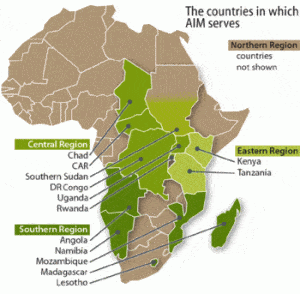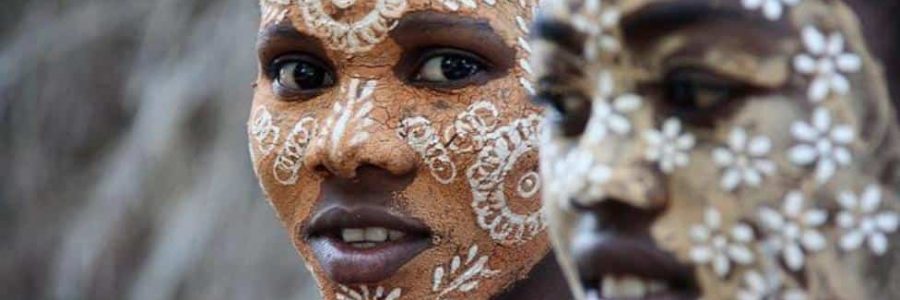Madagascar is an island off the coast of Africa (separated from it by the Mozambique Channel) in the Indian Ocean. It size compares to twice the UK. From north to south the island measures 1500 km and 500 km across. Because of its size and the biodiversity on the isle Madagascar is sometimes referred to as ‘the eighth continent’.
 The first inhabitants came ashore around the beginning of our calendar. During the first century to 700 AD the far away neighbours from Africa, Arabia and the Indonesion archipelago travelled across the ocean to start a new life on Madagascar. In 2013 the number of people had grown to over 22 million.
The first inhabitants came ashore around the beginning of our calendar. During the first century to 700 AD the far away neighbours from Africa, Arabia and the Indonesion archipelago travelled across the ocean to start a new life on Madagascar. In 2013 the number of people had grown to over 22 million.
Madagascar’s people are diverse: 18 different people groups are distinguished. Sometimes their looks reveal clearly where there origins lie: the Bara and Mikéa look most like Africans with their dark skin and frizzy hair, whereas the Mérina have a lighter skin and straight black hair like the Indonesians. Malagasi is spoken throughout the island, but in 10 very different dialects.
In the early days the different tribes formed their own kingdoms with their own laws. There were conflicts between them. In the 17th century Madagascar became a stopping place for ship travelling to the east. Slave traders, pirates, merchants and shipwrecked crews found a save harbour. In 1828 the Mérina had conquered almost the entire island and subjected the other tribes to their rule. This rule ended when the French colonised Madagascar in 1896 and sent away the Mérina-queen. In 1960 the country became an independent republic with a central government.
Most Malagasy are animists: they worship the spirits of their ancestors. The spirit world must be appeased to prevent mishappenings. Ambiosy (witch doctors) function as intermediaries between the people and the spirits. There is the belief in a creator, Zanahary or Andriamanitra, but he is far away is not concerned with everyday life. A special act of worship is the exhumation of the dead to rebury them again in their tombs after a feast.
The first protestant missionaries (from the London Missionary Society) came in 1818. They proselytised the people mainly through their literacy programme, in which children learned to read and write with the help of a Bible in Malagasy. They started the school on the special request of King Radama I. In 1835 all missionaries had to flee the country since Queen Ranavalona banned the Christian faith. The young church was heavily persecuted until her death in 1861. Missionaries came back and the church grew in large numbers. Christianity became popular amongst the upper class Mérina and the royal court, but traditional beliefs were still adhered to.
Although there are Christ-centered churches on Madagascar, they can be found mainly in the highland. The highland people (mainly Mérina) have sofar taken very little initiative to evangelise the other peoples of Madagascar. This is beginning to change. Where possible, AIM trains local Christians as missionaries amongst the unreached people groups of Madagascar.
Of the 18 people groups on the island at least 8 belong to the unreached / least reached: the Antandroy, Antanosy, Mahafaly, Tanala, Antakarana, Bara, Gujaraty and Sakalava peoples. More information about them and how to pray for them is available from www.prayafrica.org.

